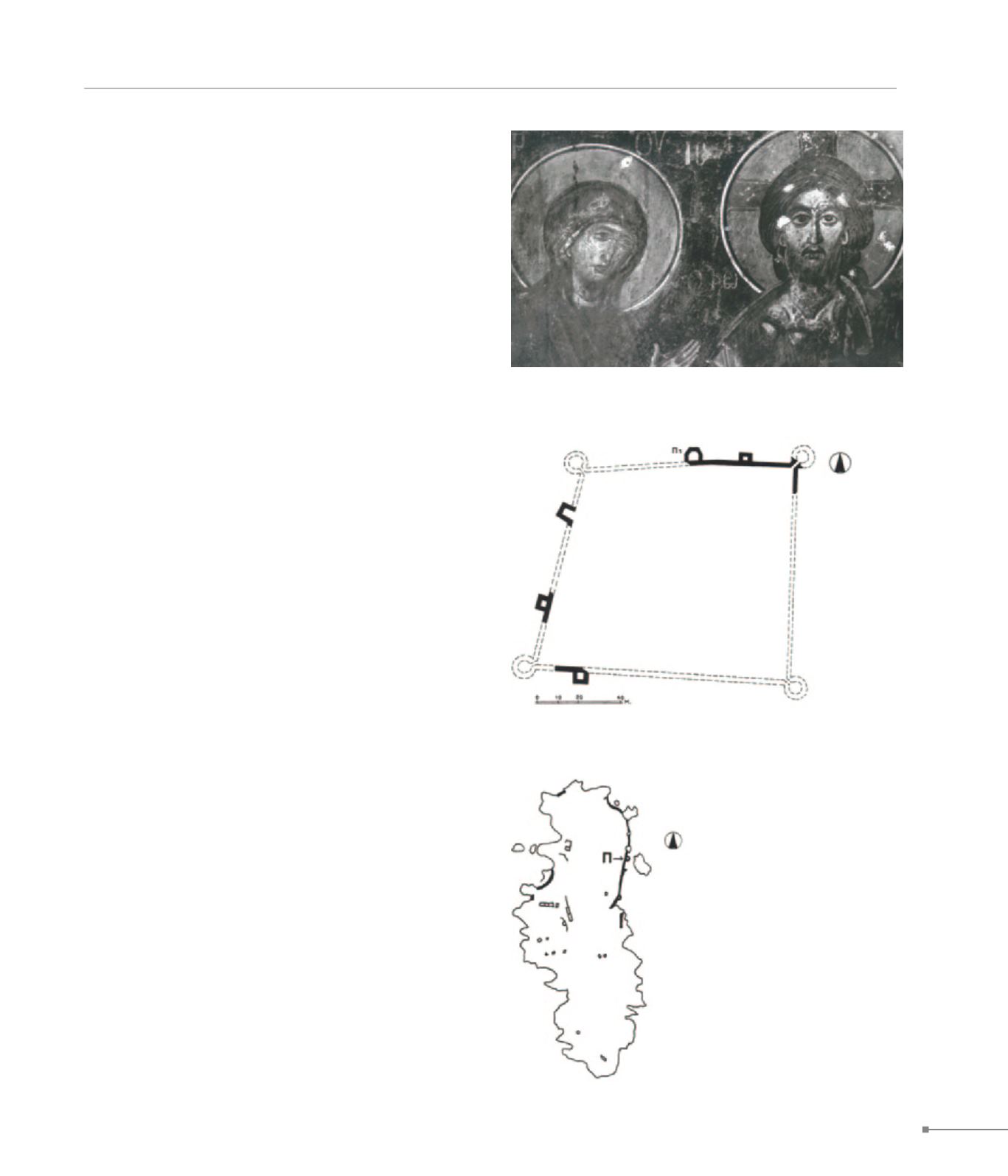
Makri.
Petrota.
THRACE
83
6.
Makri.
Makri is a settlement with a lifespan, at least, from the Roman
period until today, lying next to the centre of the modern vil-
lage. It used to be a staging post on the Via Egnatia in the Early
Christian period and was the episcopal see from the 9th c., sub-
ordinate to the metropolitan bishop of Traianoupolis; in the 14th
c. Makri was raised to a metropolis. It was destroyed in 1206 by
Tsar John of Bulgaria (r. 1197-1207), but was not totally aban-
doned. From 1361 onwards Makri suffered raids and destruc-
tion by the Ottomans. The trapezoid defensive walls date from
the early Mid-Byzantine period and have probably undergone
Late Byzantine alterations. Preserved, the towers on the corners
are circular, on the sides quadrilateral, and there is a six-sided
tower. Within the walls, next to the Aghia Anastasia church and
underneath the remnants of the earlier temple, the episcopal
church, a three-aisled basilica with narthex of the 10th c., has
been excavated. It was destroyed in the 12th or 13th c. and a
Late Byzantine cemetery developed, along with other makeshift
constructions. To the S of the walls, opposite the modern cem-
etery, a cross-in-square, four-columned church with narthex
has been excavated, probably dating from the 12th c. After
its destruction, the site was converted into a cemetery in the
13th-14th c. In the olive grove lying to the NE of the settlement,
a Mid-Byzantine church with three apses, perhaps a monastery
catholicon, has been partly excavated. It was destroyed in the
13th or 14th c. Almost by the shore, scattered around the Cy-
clops’s cave and the sea slope are glazed ceramics, rock carv-
ings (niches, cisterns, building remains) and burials, indicating
that the site was used in the Mid- (9th-12th c.) and Late- (13th-
15th c.) Byzantine periods. Carvings and wall fragments in the
cave probably belonged to a small Byzantine church.
6. Makri, defensive walls, ground plan (Μάκρη, ο οχυρός περίβολος,
κάτοψη)
5. Cave of Aghioi Theodoroi, mural paintings, detail (Σπήλαιο Αγίων
Θεοδώρων, τοιχογραφίες, λεπτομέρεια)
7.
Gatos or Agriogatos.
At a short distance from the remains of ancient Mesimvria/Zoni,
on the coast of the Thracian Sea, lie the remains of a rectan-
gular tower known as Gatos or Agriogatos. It was isolated and
was probably a watchtower. It was probably built in the Late
Byzantine period.
8.
Petrota.
At Petrota Rhodope lies the fortress of Saint George, which was
built on a cliff and served as a shelter. A gate flanked by two
preserved, nearly circular towers blocks the only access. The
fortress dates from between the end of the 6th and the 7th c.
8. Petrota, fortress of Saint George, ground plan
(Πετρωτά, φρούριο του Αγίου Γεωργίου, κάτοψη)


